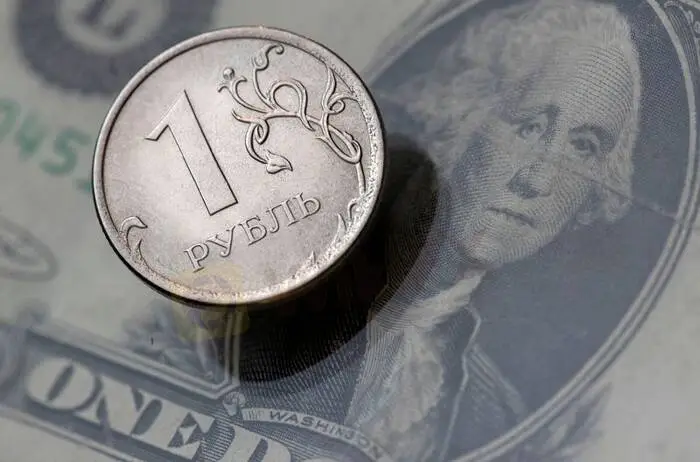简体中文
繁體中文
English
Pусский
日本語
ภาษาไทย
Tiếng Việt
Bahasa Indonesia
Español
हिन्दी
Filippiiniläinen
Français
Deutsch
Português
Türkçe
한국어
العربية
Explainer-Western sanctions on banks only scratch surface of Fortress Russia
Abstract:The European Union and Britain announced new sanctions on Russia on Tuesday after Moscows recognition of two separatist regions in Ukraine as independent entities, with the United States set to unveil their own measures shortly.

The United States, the European Union and Britain announced new sanctions on Russia on Tuesday after Moscows recognition of two separatist regions in Ukraine as independent entities.
Chief among their targets: Russian banks and their ability to operate internationally.
Yet the impact of the new sanctions is likely to be minimal. Western governments – for now – are preferring to keep the much larger sanctions packages that they have planned in reserve should the crisis escalate.
It means Russian bankers or their Western counterparts with exposures to the country wont be losing much sleep.
Indeed, U.S. banks are not expecting global sanctions to have a major impact on American bank businesses or spark contagion risk, given lenders have little exposure to the Russian economy, said three executives familiar with industry thinking. [nL8N2UX2PZ]
Heres how the banks are being targeted and which measures might hit harder:
WHAT HAS BEEN ANNOUNCED SO FAR?
European foreign ministers agreed to sanction 27 individuals and entities, including banks financing Russian decision-makers and operations in the breakaway territories.
The package of sanctions also includes all members of the lower house of the Russian parliament who voted in favour of the recognition of the breakaway regions.
Britain imposed sanctions on Gennady Timchenko and two other billionaires with close links to Russian President Vladimir Putin, and on five banks – Rossiya, IS Bank, GenBank, Promsvyazbank and the Black Sea Bank.
The lenders are relatively small and only military bank Promsvyazbank is on the Russian central banks list of systemically important credit institutions.
Bank Rossiya is already under U.S. sanctions from 2014 for its close ties to Kremlin officials.
Washington imposed sanctions on Promsvyazbank and VEB bank.
It also ramped up prohibitions on Russian sovereign debt, which U.S. President Joe Biden said meant the Russian government would be cut off from Western financing. The U.S. Treasury said it was extending current prohibitions to cover participation in the secondary market for bonds issued after March 1 by Russias Central Bank and other entities.
Russian dollar bonds extended their losses after the announcement on U.S. sanctions, with longer-dated issues slipping to record lows trading in the mid-90s, data showed. The premium demanded by investors to hold Russian debt over safe-have U.S. Treasuries blew out to 329 basis points, the widest since the COVID market rout in spring 2020.
WHAT WILL THE IMPACT BE?
For now – minimal.
Russias large banks are deeply integrated into the global financial system, meaning sanctions on the biggest institutions could be felt far beyond its borders.
But the new sanctions focus on smaller lenders.
The measures targeting banks are not yet as extensive as those imposed after Russias annexation of Crimea in 2014, although many of those sanctions remain in place.
Then the West blacklisted specific individuals, sought to limit Russia‘s state-owned financial institutions’ access to Western capital markets, targeted the bigger state lenders, and imposed widespread limits on the trade of technology.
Britains new measures refrained from imposing limits on the biggest state banks, cutting off capital for Russian companies, or ejecting other prominent so-called Russian oligarchs from Britain.
Shares in Russias biggest banks, Sberbank and VTB soared after the state-controlled groups escaped the sanctions.
Analysts say Russian institutions are better able to cope with limited sanctions than eight years earlier, and Russian state banks have cut their exposure to Western markets.
Russia has since 2014 diversified away from U.S. Treasuries and dollars – the euro and gold account for a bigger share of Russias reserves than do dollars, according to a January report from the Institute of International Finance.
Russia has some strong macroeconomic defences too, including abundant hard currency reserves of $635 billion, oil prices near $100 a barrel and a low debt-to-GDP ratio of 18% in 2021.
“The ones today were not that significant,” said Samuel Charap, a senior political scientist at the nonprofit, nonpartisan RAND Corporation, about the U.S. sanctions.
“The question is where we go from here,” he said. “I am increasingly pessimistic, and I think there is a high probability of significant further Russian military action and I think in that case, we are likely to see some of the really qualitatively more devastating measures than in the past.”
WHAT MIGHT COME NEXT?
The EU has said it is ready to impose “massive consequences” on Russia‘s economy but has also cautioned that, given the EU’s close energy and trade ties to Russia, it wants to ratchet up sanctions in stages.
Officials consider Tuesdays measures as a first round.
Beyond lenders that do business directly with the breakaway regions, its not clear yet when or whether the EU will hit the biggest banks.
Washington has prepared a raft of measures including barring U.S. financial institutions from processing transactions for major Russian banks by cutting “correspondent” banking relationships, sources told Reuters last week.
Disabling international payments would hit hard.
Those measures, however, may be kept in reserve.
Russias Sberbank and VTB would face American sanctions if Moscow proceeds with its invasion of Ukraine, a senior U.S. administration official told reporters.
If such banks did get targeted, U.S. banks could face retaliation, said Charap, who pointed to cyber attacks as a potential weapon that could be used.
WHAT WOULD HIT HARDEST?
What the regions banks and Western creditors fear most is the possibility that Russia is banned from a widely used global payment system, SWIFT, which is used by more than 11,000 financial institutions in over 200 countries.
Such a move would hit Russian banks hard but the consequences are complex. Banning SWIFT would make it tough for European creditors to get their money back and Russia has been building up an alternative payment system.
Data from the Bank of International Settlements (BIS) shows that European lenders hold the lion‘s share of the nearly $30 billion in foreign banks’ exposure to Russia.
WHICH FOREIGN BANKS ARE MOST EXPOSED?
Europe‘s banks – particularly those in Austria, Italy and France – are the world’s most exposed to Russia, and have been on high alert should governments impose new sanctions.
Graphic: Bank exposures to Russia – https://fingfx.thomsonreuters.com/gfx/mkt/myvmnxmabpr/banks%20russia.PNG
Italian and French banks each had outstanding claims of some $25 billion on Russia in the third quarter of 2021, according to BIS figures. Austrian banks had $17.5 billion. That compares with $14.7 billion for the United States.
Among the most exposed lenders is Austrias RBI, which has big operations in Russia and Ukraine. It has said “crisis plans” would come into effect if things deteriorate. Its shares closed down 7.5% on Tuesday.
Many foreign banks have, however, significantly reduced their exposure to Russia since 2014, making some bankers less concerned about the threat of sanctions.
(Additional reporting by Tom Sims in Frankfurt, Iain Withers and Karin Strohecker in London, Michelle Price in Washington and John McCrank and Megan Davies in New York; Editing by Kevin Liffey, Rosalba OBrien and Tim Ahmann)

Disclaimer:
The views in this article only represent the author's personal views, and do not constitute investment advice on this platform. This platform does not guarantee the accuracy, completeness and timeliness of the information in the article, and will not be liable for any loss caused by the use of or reliance on the information in the article.
Read more

Blockchain Decentralization: Empowering a Trustless Future
In recent years, blockchain technology has rapidly evolved from a niche innovation behind Bitcoin into a transformative force across industries. At its core, blockchain decentralization refers to the distribution of authority and decision-making away from a central entity and into the hands of a distributed network of participants. This shift redefines how data is stored and verified and paves the way for trustless, transparent, and resilient systems that challenge traditional centralized models.

The president of @Liberland, @Vít Jedlička come on stage, dialogue on trading security.
The 2025 WikiEXPO Hong Kong Station is about to grandly open. the president of @Liberland, @Vít Jedlička come on stage, dialogue on trading security.

Countdown: 1 day.WikiEXPO2025's first stop, Hong Kong, is about to open.
⏰ Countdown: 1 day. WikiEXPO2025's first stop, Hong Kong, is just tomorrow. Focus on transaction security and explore new investment opportunities. ???? Get ready to start now. See you tomorrow.

JustForex vs JustMarkets: A Comprehensive Comparison in 2025
Selecting the right forex broker can make the difference between trading success and frustration for most investors, especially retail investors. As retail traders gain unprecedented access to global markets, the choice between platforms like JustForex and JustMarkets becomes increasingly significant. Both brokers offer some shining features within the forex and CFD trading space, but their approaches differ in some areas.
WikiFX Broker
Latest News
The Withdrawal Trap: How Scam Brokers Lure Victims into Paying More
FCA to Investors: Think Twice Before Trusting These Brokers
Trump\s tariffs: How could they affect the UK and your money
Trump gambles it all on global tariffs he\s wanted for decades
TradingView Brings Live Market Charts to Telegram Users with New Mini App
Trump tariffs: How will India navigate a world on the brink of a trade war?
Interactive Brokers Launches Forecast Contracts in Canada for Market Predictions
Authorities Alert: MAS Impersonation Scam Hits Singapore
Stocks fall again as Trump tariff jitters continue
IG Group Acquires Freetrade for £160M to Expand UK Investment Market
Currency Calculator







